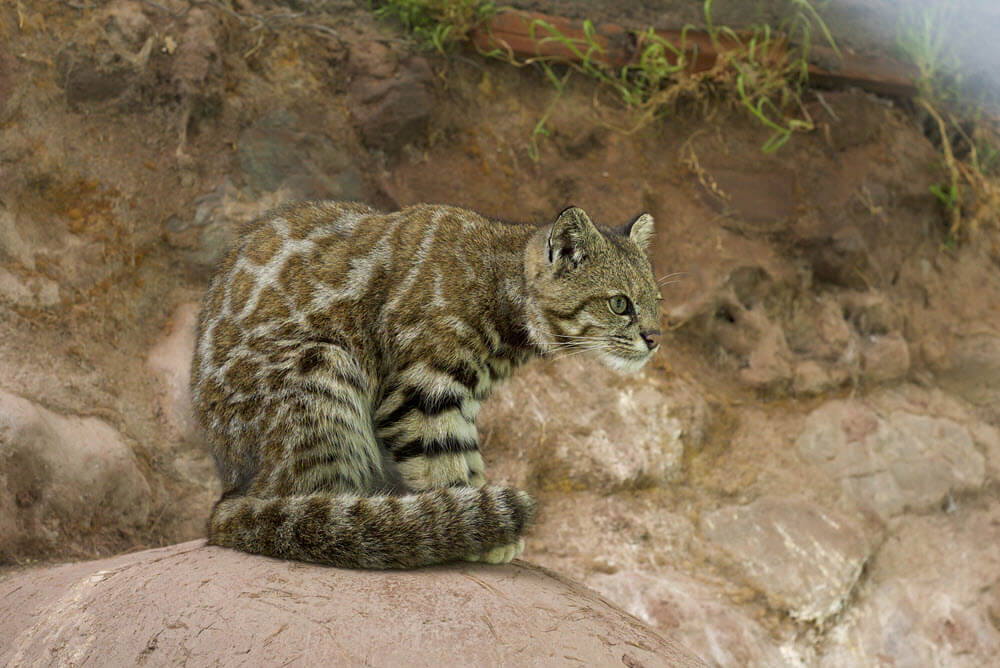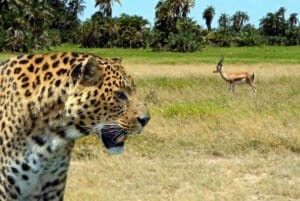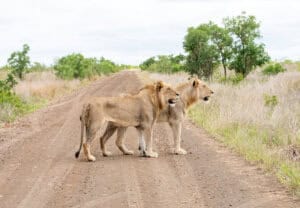The Andean mountain cat is a small wild cat that lives in the Andes mountains of Peru, Bolivia, Northern Chile, and northwestern Argentina.
Scientific Name: Leopardus jacobita
Conservation Status: Endangered
Lineage – The Andean mountain cat belongs to the Ocelot lineage, which includes the ocelot, margay, pampas cat, oncilla southern tiger, oncilla northern tiger cat, Geoffroy’s cat, and kodkod
About the Andes Mountains
The Andes Mountains stretches over 5,500 miles from the southern tip of the continent to the northern coast. This grand mountain range consists of a vast series of extremely high plateaus topped by even higher peaks, creating an unbroken wall that separates a narrow western coastal area from the rest of the continent. The Andes is known for containing the highest peaks in the Western Hemisphere, with the iconic Mount Aconcagua standing tall at a breathtaking 22,831 feet on the border of Argentina and Chile.
It has been home to various indigenous communities for thousands of years, and their diverse ecosystems support a wide array of flora and fauna, some of which are found nowhere else on Earth.

Image: Andean mountain range, Peru

Interesting Andean Mountain Cat Facts
- Considered a sacred animal by the Aymara and Quechua people
- It inhabits high elevations in the Andes, from 6000 to over 13,000 feet.
- It is one of the rarest wild cats in South America.
- Has a long, busy tail with several dark rings.
- The estimated total population of Andean mountain cats is less than 2,500.
About the Andean Mountain Cat
Although the Andean mountain cat was first described in 1865, it was not until 1997 that ecologist and small wild cat specialist Jim Sanderson saw and photographed it. There are no subspecies.
Physical appearance
The Andean mountain cat, comparable in size to a domestic cat, appears larger due to its dense fur and elongated tail. Its coat is a pale silver or ash-gray color, with isolated spots and stripes in hazel or orange-brown. The cat’s tail and limbs are encircled with black rings. Occasionally, it is mistaken for another Andean native, the Pampas cat (Leopardus pajeros).
This cat features a black nose and lips, along with rounded ears. Adult Andean mountain cats measure between 22 and 33 inches in length, and their tails span 16 to 19 inches.
| Andean Mountain Cat | FROM | TO |
| Weight | 6 lbs. | 12 lbs. |
| Body Length | 22.7 in. | 33.5 in. |
| Tail Length | 16.3 in. | 19.1 in. |
 Territory (Where the Andean mountain cat lives)
Territory (Where the Andean mountain cat lives)
Andean mountain cats live at high elevations in the Andes Mountains in four South American countries (Argentina, Bolivia, Chile, and Peru). Two other wild cats live in the Andes: the pampas cat and the puma. There have also been sightings of the cat at lower altitudes in the Mendoza province of Argentina. Generally, they prefer rocky locations above the timberline. They can also be found in mountain grasslands, shrublands, and meadows.
Hunting and prey (diet)
The prey of the Andean mountain cat is believed to be rodents, including viscacha (South American rodents that look like rabbits) and chinchillas.
Reproduction
Litters appear to consist of one to two kittens. There have been sightings of Andean mountain cats in pairs with their offspring.
Andean Mountain Cat Conservation
It is estimated that less than 2,500 Andean mountain cats live in the wild.
Laws that protect the Andean mountain cat include:
- Argentina: several laws and statutes that prohibit Andean mountain cat hunting and trade.
- Bolivia: a decree that bans hunting, capture, storage, and condition of wild animals and their by-products.
- Peru: a ban on hunting, trading, and possessing the Andean cat or Andean cat body parts (living and dead).
- Chile: ban on hunting all felids.
The cat is endangered due to habitat loss, agricultural growth, hunting, and reduced prey. Despite legislation protecting the cat in all four countries where it lives, the population has been steadily decreasing. Reasons for the decline include continued hunting, habitat loss, and loss of prey.
Andean Mountain Cats in Culture
The Andean mountain cat is considered a sacred animal by the indigenous Aymara and Quechua people. Rural Chileans and Bolivians have traditionally believed that if someone encounters a mountain cat, it must be killed for spiritual power and to prevent bad luck. However,
The Aymara live in the Andes and altiplane regions of South America. The Quichua are people of South America who speak the Quechua language, which originated in Peru.
Research Quotes
Marino, Lucherini, et al. “Clearly, Andean cats are rare in the sense that they are endemic, restricted in distribution, and rocky outcrop specialists.” – 2010 Highland cats: ecology and conservation of the rare and elusive Andean cat |


 Territory (Where the Andean mountain cat lives)
Territory (Where the Andean mountain cat lives)















THEY ARE SO CUTE THEN CANT GO EXTINCT ?????
Hi Luna,
Yes, they are very similar in appearance. The photo source says Andean Mountain Cat. Here is an image of pampas cat for comparison
Best,
Rebecca
I think that first picture might actually be a Pampas cat.
could be a small bob cat since Andean mountain cats dont live in or anywhere near Missouri
2 days ago reports appeared of the “First photos” of Andean Cats, after one was phographed in Arequipa province – the first photos in Peru – of course photos have existed since the 1980s elsewhere!
-hace 2 dias reportes de las “primeras fotos” del gato andino salieron en Peru cuando tomaron fotos en la provincia perunana de Arequipa – por supuesto hay fotos desde otros paises desde los años 80`..
Hi Joyce,
That’s amazing! If you ever see this cat again and can get a photo of it, send it in and we will have it checked out.
Best,
DR
I live in Missouri and saw the Andean Mountain Cat . I am POSITIVE I saw exactly that . I live in the woods between 2 forests, and it came running out of the woods a few feet in front of me. At first I thought it was just a big male cat, then it stopped and stared at me for just over a full minute . How could this be possible ?